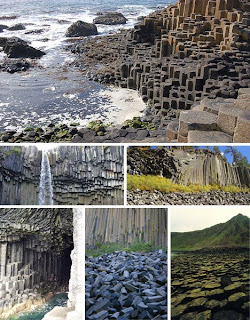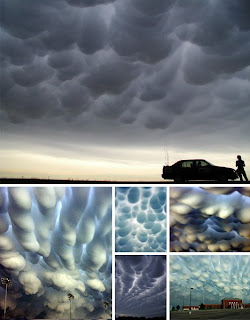The classical natural wonders are huge and hard to miss - vast canyons, giant mountains and the like. Many of the most fantastic natural phenomena, however, are also least easy to spot. Some are incredibly rare while others are located in hard-to-reach parts of the planet. From moving rocks to mammoths clouds and red tides to fire rainbows, here are seven of the most spectacular phenomenal wonders of the natural world.
1) Sailing Stones

The mysterious moving stones of the packed-mud desert of Death Valley have been a centre of scientific controversy for decades. Rocks weighing up to hundreds of pounds have been known to move up to hundreds of yards at a time. Some scientists have proposed that a combination of strong winds and surface ice account for these movements. However, this theory does not explain evidence of different rocks starting side by side and moving at different rates and in disparate directions. Moreover, the physics calculations do not fully support this theory as wind speeds of hundreds of miles per hour would be needed to move some of the stones.
2) Columnar Basalt

When a thick lava flow cools it contracts vertically but cracks perpendicular to its directional flow with remarkable geometric regularity - in most cases forming a regular grid of remarkable hexagonal extrusions that almost appear to be made by man. One of the most famous such examples is the Giant's Causeway on the coast of Ireland (shown above) though the largest and most widely recognized would be Devil's Tower in Wyoming . Basalt also forms different but equally fascinating ways when eruptions are exposed to air or water.
3) Blue Holes

Blue holes are giant and sudden drops in underwater elevation that get their name from the dark and foreboding blue tone they exhibit when viewed from above in relationship to surrounding waters. They can be hundreds of feet deep and while divers are able to explore some of them they are largely devoid of oxygen that would support sea life due to poor water circulation - leaving them eerily empty. Some blue holes, however, contain ancient fossil remains that have been discovered, preserved in their depths.
4) Red Tides

Red tides are also known as algal blooms - sudden influxes of massive amounts of coloured single-cell algae that can convert entire areas of an ocean or beach into a blood red colour. While some of these can be relatively harmless, others can be harbingers of deadly toxins that cause the deaths of fish, birds and marine mammals. In some cases, even humans have been harmed by red tides though no human exposure are known to have been fatal. While they can be fatal, the constituent phytoplankton in ride tides are not harmful in small numbers.
5) Ice Circles

While many see these apparently perfect ice circles as worthy of conspiracy theorizing, scientists generally accept that they are formed by eddies in the water that spin a sizable piece of ice in a circular motion. As a result of this rotation, other pieces of ice and flotsam wear relatively evenly at the edges of the ice until it slowly forms into an essentially ideal circle. Ice circles have been seen with diameters of over 500 feet and can also at times be found in clusters and groups at different sizes as shown above.
6) Mammoth Clouds

True to their ominous appearance, mammoths clouds are often harbingers of a coming storm or other extreme weather system. Typically composed primarily of ice, they can extend for hundreds of miles in each direction and individual formations can remain visibly static for ten to fifteen minutes at a time. While they may appear foreboding they are merely the messengers - appearing around, before or even after severe weather.
7) Fire Rainbows

A circum horizontal fire rainbow arc occurs at a rare confluence of right time and right place for the sun and certain clouds. Crystals within the clouds refract light into the various visible waves of the spectrum but only if they are arrayed correctly relative to the ground below. Due to the rarity with which all of these events happen in conjunction with one another, there are relatively few remarkable photos of this phenomena.

No comments:
Post a Comment
If you got things to write.
Pls don't write.
Cozs you got time to write.
I don't fking time to reply!
So wast your time and my time!